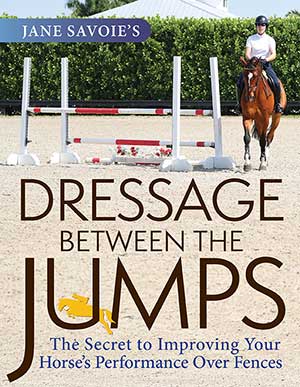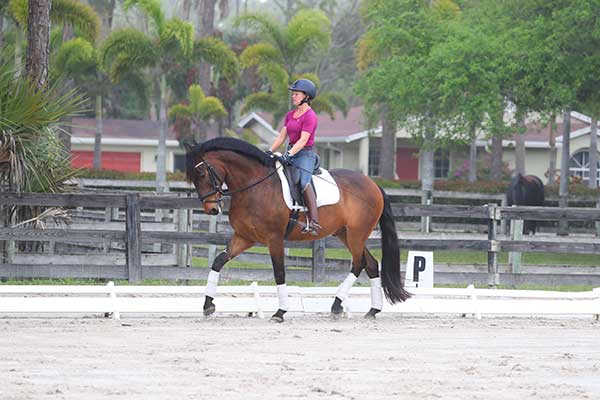
By Jane Savoie
Connection means that you’ve connected your horse’s back end to his front end. Think of your horse’s back like it is a suspension bridge or a strung bow. If your horse’s neck is round, but he doesn’t touch the reins (there are loops and a lack of contact), he’s “behind the bit.” Some horses even look like they have what’s called a “broken neck.” This expression refers to the fact that the highest point of the neck is at the third vertebra rather than the horse’s poll.
Draw reins and other gadgets won’t help your horse understand how to come honestly on the bit—instead, he’ll often adopt this “behind the bit” position. Gadgets create a false frame so there’s no real connection. “Fiddling” with the bit or “sawing” on your horse’s mouth gives you the same false headset. Rather than going through them, he “sucks back” away from them, or breaks at the third vertebra.
When your horse consistently goes behind the bit, show him how to take a contact with your hands by teaching him to go “forward through his body.” Let me elaborate on the word “forward” first.
There are different aspects to being “forward.” Forward is a direction. For example, your horse can travel straight forward over the ground. He can also travel sideways and forward, like in a leg-yield. You also want your horse to “think forward.” This means he takes responsibility for his own energy, and he’s also reactive to your driving aids.
When your horse is either behind the vertical or behind the bit, he needs to go forward through his body. Think of his body as a parallelogram. If his profile is behind the vertical, his hind legs are out behind his body to the same degree. You need to shift the parallelogram in the opposite direction so the hind legs come under the body and the poll comes up.
To teach him to go forward through his body so you shift the parallelogram, do this exercise:
1. Go on a circle in posting trot.
2. Close your legs to ask for a few strides of a lengthening.

3. Bring your horse back to a working trot.
4. Do it over and over again until he develops a knee-jerk reaction, such that when you close your legs, he goes forward over the ground. You want an immediate link in his mind that says, “Closed legs means lengthen.”
5. Now close your legs the same way, but this time use a “braced back” (engage your stomach muscles) and closed outside hand so your horse doesn’t lengthen. Instead, he should come “forward through his body”—rather than expressing his energy forward over the ground in a lengthening. As a result, he’ll come under with his hind legs, up with his front end, and take a contact with your hands.
6. As soon as you feel some weight in your hands, praise your horse with your voice. Note: Don’t pat him at that moment, because you’ll be dropping the contact you’ve just worked so hard to get!
7. Do this exercise many times in schooling. Set up little scenarios where you let your horse come behind the bit. Then close your legs as if you’re going to lengthen to get him to go “forward through his body.” This exercise gives you a tool (closing your legs) so you can ask your horse to go “forward through his body” up into your hands any time you need.
About the Author
Jane Savoie is one of the most recognized names in the equine industry and for good reason. Her accomplishments and the breadth of her influence are impressive. As a dressage rider, she was a member of the United States Equestrian Team, competing internationally, including a position as the reserve rider for the bronze-medal-winning team at the 1992 Olympics. Savoie was the dressage coach for the Canadian 3-Day Event Team at the 1996 and 2004 Olympics, and coached a number of dressage and event riders at the 2000 Olympics. She is the author of many bestselling books and video programs on riding, training, and sport psychology, and is a popular motivational speaker. Savoie splits her time between Vermont and Florida.
This excerpt from Dressage Between the Jumps by Jane Savoie is reprinted with permission from Trafalgar Square Books (www.HorseandRiderBooks.com).
Find more interesting reading in our section on Books. There more information in our section on Health & Education.

































